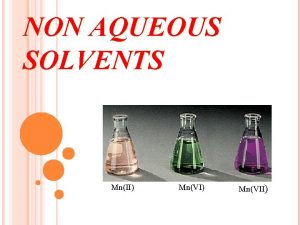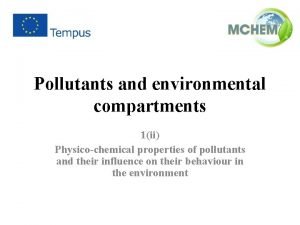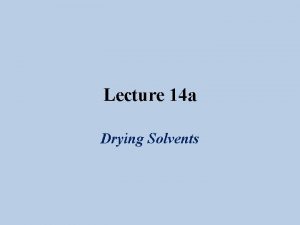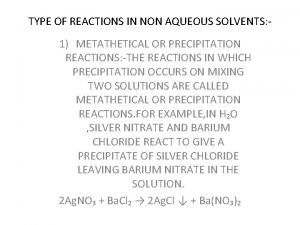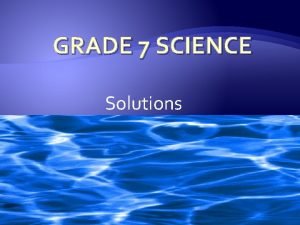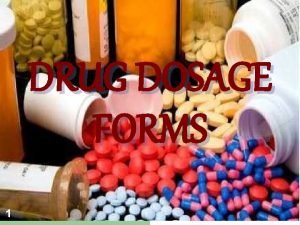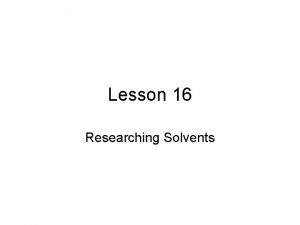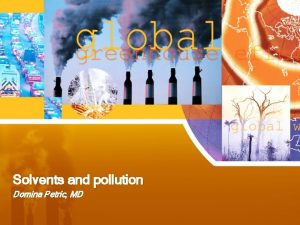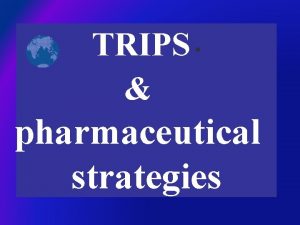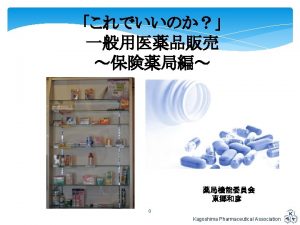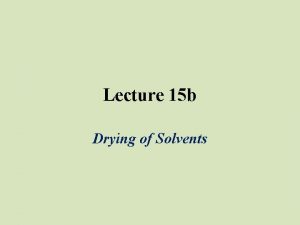Pharmaceutical Technology I Lecture 3 Solvents for pharmaceutical







- Slides: 7

Pharmaceutical Technology I Lecture 3

Solvents for pharmaceutical uses �All pharmaceutical solvents should have the following properties: 1. Not toxic. 2. Not volatile. 3. Stable. � Not toxic mean there is no harmful effect on body. � In case of volatility, so it is volatile, so it evaporates and so lead to precipitate the active ingredient and it may become toxic or harmful. Therefore, it should store in cool place and in a well closed container. � In case of stability, it should not interact with active ingredient or the added substances and should be stable on storage condition and protect the active ingredient stable.

Solvent used in pharmaceutical preparation Water: it is a good solvent for most inorganic salts and for many organic compounds, its miscibility with other solvents such as alcohol and glycerin makes it a useful vehicle for many pharmaceutical preparations. 2. Alcohol USP: ethyl alcohol, ethanol, (94. 9 -96 % by volume C 2 H 5 OH): it is used as a solvent for certain drugs that are insoluble in water like organic substances (both natural and synthetic). It dissolve important plant constituents such as resins, volatile oils, alkaloids, glycosides and it is also used in liquid product as antimicrobial preservatives alone or as a co-preservative with other preservatives like parabens. 1.

�Alcohol is frequently used with other solvents, as glycols and glycerin to reduce the amount of alcohol required. Since it has undesired pharmacologic and potential toxic effects when ingested in pharmaceutical products particularly by children, so the recommended alcohol content limit is as follows: �For OTC oral products intended for children under 6 years of age, the recommended alcohol limit is 0. 5% �For product intended for children 6 to 12 years of age the recommended limit is 5% �For products recommended for children over 12 year and for adults, the recommended limit is 10%.

3. Diluted Alcohol, NF 49 -50%: is prepared by mixing equal volume of alcohol, USP, and Purified Water, USP and used in manufacture of certain preparation. Such hydroalcoholic liquid or solvent is useful in various pharmaceutical processes and preparations since it dissolves both alcohol-soluble and water-soluble substances. 4. Dehydrated Alcohol, USP: 99. 5% by volume C 2 H 5 OH (absolute alcohol): it is practically free from water and its chief use in pharmacy is in research and analytic work and in the preparation of synthetic organic medicinal. 5. Isopropyl alcohol: Used in cosmetic and dermatologic formulation.

6. Glycerin, USP (Glycerol): it is a clear syrupy liquid with a sweet taste. It is miscible with both water and alcohol but not with chloroform, ether or fixed oil, it is an excellent solvent for tannins, phenol and boric acid. Because of its preservative qualities, sometimes it is used as a stabilizer for solutions prepared with other solvents. When it is used as a solvent, glycerin must be heated in order to reduce its viscosity. If this is not done it is difficult to dissolve substance in it. It is used as a stabilizer and as an auxiliary solvent in conjunction with water or alcohol. It is used in many internal preparations.

9. Propylene glycol: it is miscible with water, acetone, alcohol and chloroform, it will dissolve many essential oils, but it is immiscible with fixed oils. It has a wide range of usefulness as a solvent and is used as a replacement for glycerin in modern pharmaceutical and cosmetic formulations. 10. Polyethylene glycol 400: it is miscible with water, acetone, alcohol and other glycols. It dissolves many water soluble organic compounds as well as certain water insoluble substances such as acetyl salicylic acid. 11. Chloroform: it is miscible with alcohol, ether, benzene, solvent hexane and both fixed and volatile oils. It dissolves in 210 volumes of water. It is not flammable, but its vapor decomposes by naked flames producing harmful gases, it is a solvent for many alkaloids.

